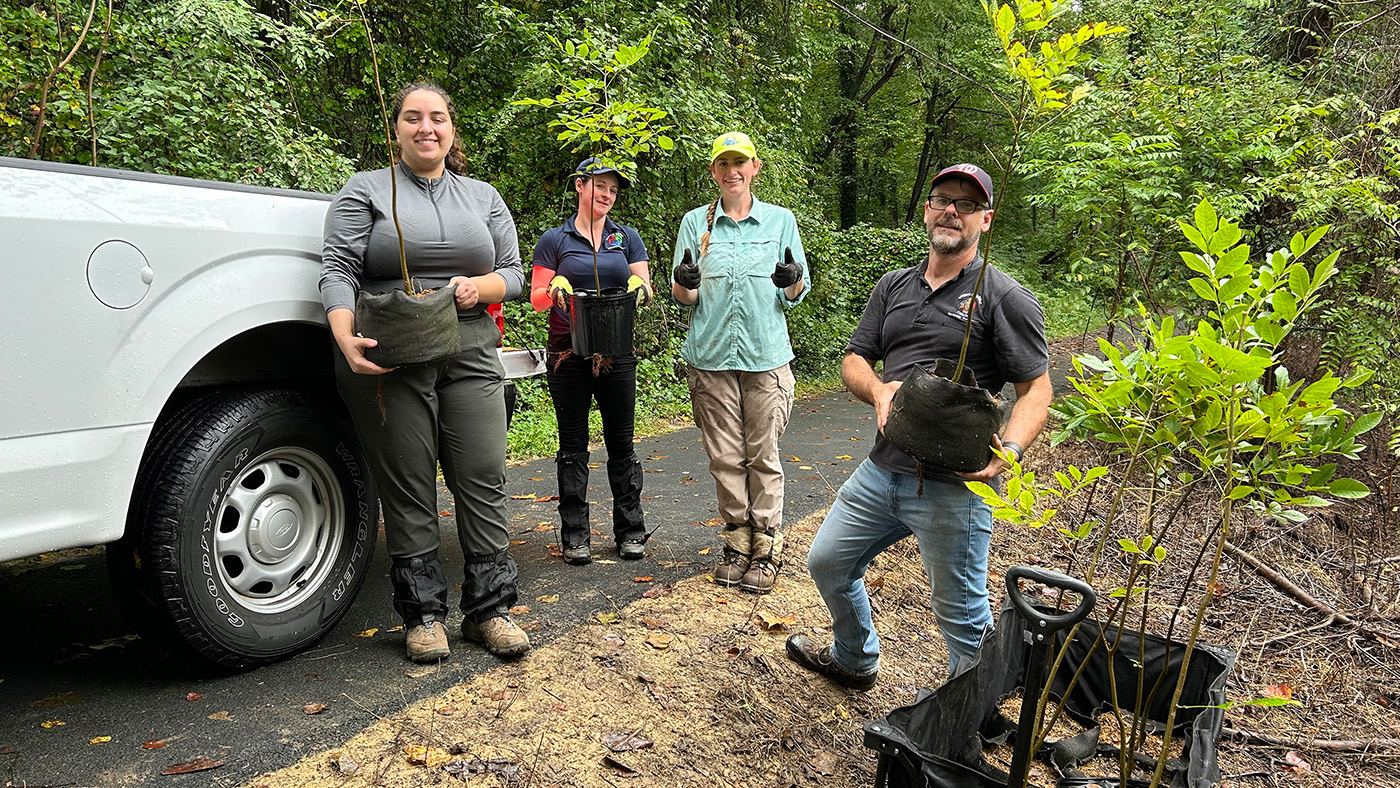~ Plantings are part of a restoration effort at the park ~
FAIRFAX COUNTY, Va. – An ambitious tree-planting effort is underway at Bren Mar Park in eastern Fairfax County, where staff in DPWES' Urban and Community Forestry Division (UCFD) hope their restoration efforts will combat invasive plants and the destructive emerald ash borer (EAB) beetle.
This week, UCFD began planting more than 400 native saplings of green and white ash trees and swamp white oak trees with help from volunteers.
The county’s tree experts are hoping that as the transplanted trees grow, they will help other native tree species found at the site – including red oaks, black locust and persimmons – also grow and thrive.
“This is a restoration of a forested area completely inundated with invasive vines and plants, to help the native trees that we’ve found under the unwanted debris that will be supported with this planting,” said Cristina deMariano, Urban Forester II, DPWES’s Urban and Community Forestry Division, who is leading the transplanting effort at Bren Mar Park.
This effort is part of Fairfax County’s larger effort to restore Bren Mar Park to its original state before it was taken over by invasive plants and insects, such as porcelain berry and emerald ash borer.
Restoration efforts at the park have been carried out in phases by the Department of Public Works and Environmental Services’ Urban and Community Forestry Division, in partnership with the Fairfax County Park Authority.


Since January 2024, invasive plants have been treated by using integrated pest management techniques to subdue invasives and release native trees hidden underneath. One of those techniques included releasing an army of non-stinging wasps – specifically Oobius agrili – that are known to eliminate emerald ash borer (EAB) populations by laying eggs in EAB larvae.
“We are trying to re-establish the ash tree population to support the parasitoid wasp population and prepare the park for another release of these helpful wasps in about three to five years,” deMariano said.
Healthy ash trees are tall and provide a lush canopy and welcomed shade. There are numerous ash tree species native to Virginia and North America, including white and green ash trees.
But when emerald ash borer – invasive insects that originate from Asia – invade an ash tree, they drill holes and burrow into the bark where they lay their eggs. When they hatch, hungry EAB larvae eat the inside of the tree which eventually kills the tree by depriving it of nutrients and water.
“EAB have virtually wiped out most of the mature ash trees from Fairfax County’s landscape,” deMariano said.
Additionally, invasive plants greatly affect all the urban canopy in Fairfax County. To help promote tree health, invasive control is becoming part of the discussion to truly support tree canopy.
The county’s Urban and Community Forestry team will monitor the success of the Bren Mar restoration project and, if feasible, consider other sites for similar management efforts.
“Preserving our native tree species is critical to carrying out Fairfax County’s goals for environmental stewardship. Trees absorb carbon from the atmosphere and provide much needed cooling shade,” deMariano said. “If the Bren Mar restoration efforts are successful – meaning, we see healthy, native species thriving a few years from now, then we’ll look at replicating this type of restoration in other areas of Fairfax County.”
A few tips for county residents:
- Be mindful of the plants you buy and plant in your yard. Look for native plants and trees as a first option when planting in your yard.
- Be cautious when moving firewood that some invasive species, such as the emerald ash borer, may be unknowingly transported with the timber.
“Together, we must do as much as we can for native tree species because they help the local wildlife and the ecosystem thrive.”


